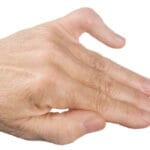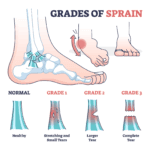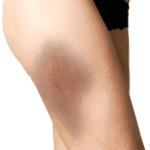Introduction
Arthritis is a condition that causes inflammation of the joints, which can lead to pain, stiffness, and loss of function. When arthritis affects the arms, it can severely impact daily activities such as writing, lifting, and even simple movements. Understanding the types of arthritis, their symptoms, and the available treatments is crucial for managing this condition effectively. This article provides an in-depth exploration of arthritis in the arms, including its symptoms, diagnostic methods, treatments, and general advice for managing the condition.
Types of Arthritis Affecting the Arms
Osteoarthritis (OA)
Osteoarthritis is the most common form of arthritis and typically affects older adults, though it can occur at any age due to joint injury or overuse. OA is a degenerative joint disease where the cartilage that cushions the ends of bones in the joints deteriorates over time.
- Causes: Wear and tear on the joints, joint injury, obesity, genetics.
- Symptoms: Joint pain and stiffness, swelling, decreased range of motion, a grating sensation in the joints.
- Commonly Affected Areas: Fingers, thumbs, shoulders, and elbows.
Rheumatoid Arthritis (RA)
Rheumatoid arthritis is an autoimmune disorder where the immune system mistakenly attacks the synovium, the lining of the membranes that surround the joints. This causes inflammation that can eventually damage the cartilage and bone within the joint.
- Causes: Autoimmune response, genetic factors.
- Symptoms: Tender, warm, and swollen joints; morning stiffness lasting more than 30 minutes; fatigue; fever; weight loss.
- Commonly Affected Areas: Wrists, fingers, elbows.
Psoriatic Arthritis (PsA)
Psoriatic arthritis is a form of arthritis that affects some people who have psoriasis, a condition characterized by red patches of skin topped with silvery scales. Most people develop psoriasis first and are later diagnosed with PsA, but the joint problems can sometimes begin before skin lesions appear.
- Causes: Immune system attacking healthy cells and tissue, genetic factors.
- Symptoms: Joint pain, stiffness, and swelling; swollen fingers and toes; foot pain; lower back pain.
- Commonly Affected Areas: Fingers, wrists, and shoulders.
Symptoms of Arthritis in the Arms
The symptoms of arthritis in the arms can vary depending on the type and severity of the condition. Common symptoms include:
- Pain: Often described as a dull ache or burning sensation.
- Stiffness: Particularly noticeable in the morning or after periods of inactivity.
- Swelling: Inflammation in the joint can lead to visible swelling.
- Reduced Range of Motion: Difficulty moving the affected joint through its full range.
- Weakness: Reduced strength in the arm and hand.
- Grating Sensation: A feeling or sound of bone rubbing against bone.
Diagnostic Methods
Diagnosing arthritis in the arms involves a combination of medical history, physical examination, and diagnostic tests.
- Medical History: Discussing symptoms, their onset, and family history of arthritis.
- Physical Examination: Assessing the joints for swelling, redness, warmth, and tenderness.
- Imaging Tests: X-rays, MRI, and ultrasound can help visualize joint damage and inflammation.
- Laboratory Tests: Blood tests for markers of inflammation (like ESR and CRP) and specific antibodies (like RF and anti-CCP for RA).
Treatments for Arthritis in the Arms
Treatment for arthritis in the arms aims to relieve symptoms, improve joint function, and prevent further joint damage. The treatment plan may include a combination of medications, physical therapy, lifestyle changes, and sometimes surgery.
Medications
- NSAIDs: Nonsteroidal anti-inflammatory drugs such as ibuprofen and naproxen help reduce pain and inflammation.
- Corticosteroids: These can be taken orally or injected directly into the joint to provide relief from inflammation.
- DMARDs: Disease-modifying antirheumatic drugs are used to slow the progression of RA and PsA.
- Biologics: These are a newer class of DMARDs that target specific parts of the immune system.
Physical Therapy
- Exercise: Regular, low-impact exercise such as swimming or walking can help maintain joint flexibility and strength.
- Occupational Therapy: Helps patients learn how to perform daily tasks in ways that reduce stress on the joints.
- Manual Therapy: Techniques such as massage and joint mobilization can reduce pain and improve function.
Lifestyle Changes
- Diet: Eating a balanced diet rich in anti-inflammatory foods such as fruits, vegetables, and omega-3 fatty acids.
- Weight Management: Maintaining a healthy weight reduces stress on the joints.
- Ergonomic Adjustments: Using tools and devices that reduce strain on the arms during activities.
Surgical Options
- Joint Repair: Damaged joints can be smoothed or realigned to reduce pain and improve function.
- Joint Replacement: In severe cases, the damaged joint may be replaced with a prosthesis.
- Joint Fusion: Bones in the joint are fused together to eliminate pain from movement.
Frequently Asked Questions (FAQs)
Q: Can arthritis in the arms be cured? A: There is currently no cure for arthritis, but many treatments can help manage symptoms and improve quality of life.
Q: What lifestyle changes can help manage arthritis in the arms? A: Regular exercise, a healthy diet, weight management, and ergonomic adjustments can all help manage arthritis symptoms.
Q: Are there any natural remedies for arthritis pain? A: Some people find relief with natural remedies such as fish oil supplements, turmeric, and acupuncture, but it’s important to discuss these options with a healthcare provider.
Q: How can I prevent arthritis in the arms? A: While you can’t always prevent arthritis, maintaining a healthy lifestyle and avoiding joint injuries can reduce your risk.
General Advice for Managing Arthritis in the Arms
- Stay Active: Regular exercise can help keep your joints flexible and reduce pain.
- Protect Your Joints: Use assistive devices to reduce strain on your joints during daily activities.
- Manage Stress: Techniques such as meditation and yoga can help reduce stress, which can exacerbate arthritis symptoms.
- Follow Your Treatment Plan: Consistently taking your medications and attending physical therapy sessions can help manage your symptoms effectively.
- Communicate with Your Healthcare Provider: Regular check-ups and open communication with your healthcare provider can ensure your treatment plan is effective and adjusted as needed.





